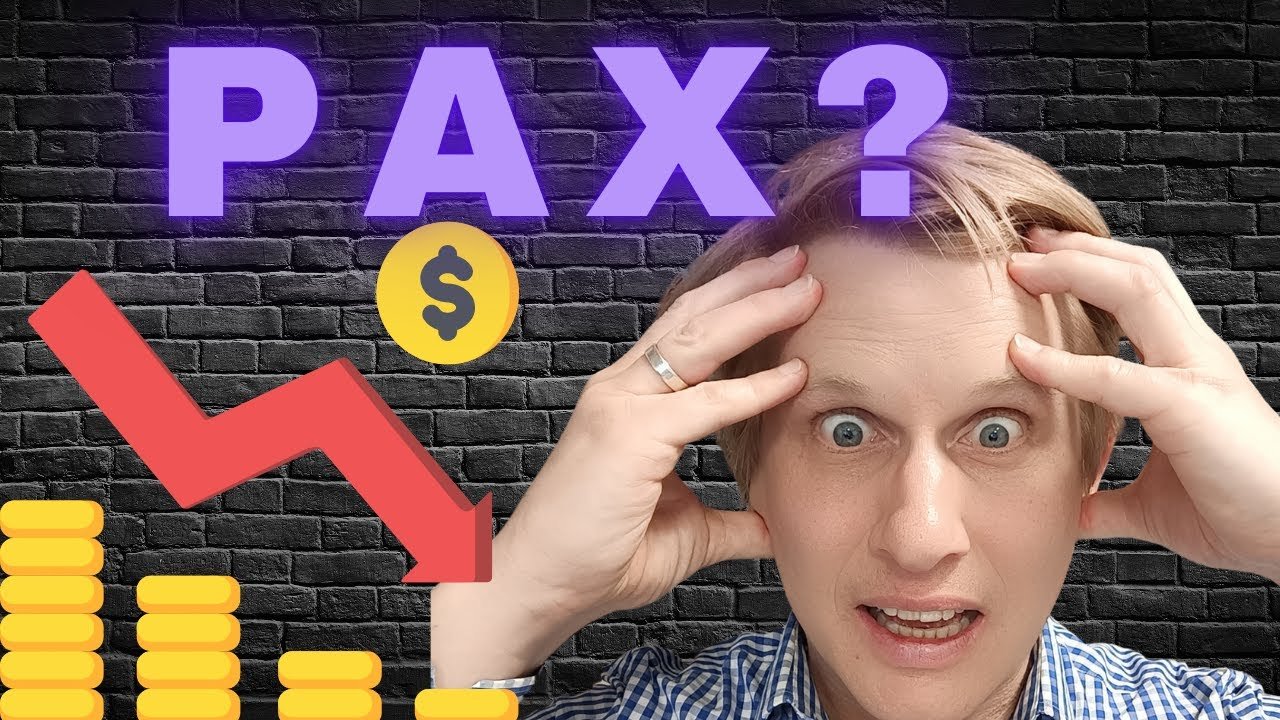-
Exploring Dividend Stocks vs ETF: Your Investment Guide as you look to invest in dividend stocks, Dividend ETFs, or Dividend Funds
When deciding where to invest your money, understanding the distinctions between dividend stocks vs ETFs is crucial. Dividend stocks offer the potential for high returns and the opportunity to receive dividends, but they can also be volatile and carry higher risk. On the other hand, ETFs provide the benefits of diversification, lower risk, and less volatility, as they are made up of a collection of stocks or assets. ETFs can be passively or actively managed and often have specific focuses, such as large companies, value-priced stocks, or dividend-paying companies. Both stocks and ETFs can be traded any time the market is open and can be taxed at short-term or long-term capital gains rates. Overall, the choice between dividend stocks and ETFs depends on individual investment goals, risk tolerance, and personal preference.
Key Takeaways:
- Dividend stocks offer the potential for high returns and regular dividend payments but can be volatile and carry higher risk.
- ETFs provide diversification, lower risk, and are composed of a collection of stocks or assets.
- ETFs can be passively or actively managed and have specific focuses, such as large companies or dividend-paying companies.
- Both dividend stocks and ETFs can be traded any time the market is open and can have different tax implications.
- The choice between dividend stocks and ETFs depends on individual investment goals, risk tolerance, and personal preference.
What are Quality Dividend Stocks?
Dividend stocks are stocks of companies that distribute a portion of their earnings to shareholders in the form of dividends. These stocks are popular among investors who seek a regular income stream from their investments. By investing in dividend-paying companies, shareholders have the opportunity to earn not only from potential capital appreciation but also from the recurring dividend payments. Dividend stocks offer several advantages to investors. First, they provide a steady source of income, making them an attractive option for those seeking regular cash flow. Additionally, dividend stocks have the potential for high returns, as companies that consistently pay dividends are often financially stable and well-established in their respective industries. Moreover, dividend stocks have historically shown resilience during market downturns, offering investors a degree of stability. When investing in dividend stocks, it is essential to analyze various factors, including the company’s dividend yield, payout ratio, and dividend history. These metrics can give investors insights into the company’s ability to sustain its dividend payments over time. Additionally, it is crucial to diversify your portfolio by investing in dividend stocks across different sectors to mitigate risk effectively.

Dividend Stocks Table
Company Dividend Yield Payout Ratio Dividend History Company A 3.5% 50% 10 consecutive years Company B 4.2% 60% 5 consecutive years Company C 2.8% 40% 15 consecutive years Investing in dividend stocks can be a suitable strategy for long-term investors looking to build a portfolio that generates both capital gains and a passive income stream. However, it is essential to note that dividend stocks are not without risks. Factors such as changes in interest rates, economic conditions, or company-specific issues can impact a company’s ability to continue paying dividends. Therefore, thorough research and due diligence are necessary to select the right dividend stocks that align with your investment goals and risk tolerance.
The Benefits of Dividend Stocks vs ETF
Investing in dividend stocks can provide various benefits, including the potential for regular dividend payments and the opportunity for capital appreciation. Dividend stocks are shares of companies that distribute a portion of their earnings to shareholders in the form of dividends. These dividends can be a source of regular income, especially for investors looking to generate passive cash flow. One of the key advantages of dividend stocks is the potential for a higher dividend yield compared to other investment options. Dividend yield is the ratio of the annual dividend payment to the stock price. Stocks with a high dividend yield offer investors the opportunity to earn a greater return on their investment through dividend payments alone. Some dividend stocks, like real estate investment trusts (REITs) can pay very high dividend yields and income. Furthermore, dividend stocks can provide a level of stability in a volatile market. Companies that consistently pay dividends often have established business models and solid financial performance. This stability can be attractive to risk-averse investors who prioritize consistent income streams and are less focused on short-term price fluctuations. Additionally, dividend stocks can offer the potential for capital appreciation over time. As companies grow and increase their earnings, their stock prices may rise, leading to capital gains for investors. This dual benefit of regular dividend income and potential price appreciation can make dividend stocks an appealing option for long-term investors seeking a balanced investment strategy.
Dividend Stocks Benefits Summary – Why Dividend Investing?
- Potential for regular dividend payments
- Higher dividend yield compared to other investments
- Stability in a volatile market
- Potential for capital appreciation

Company Dividend Yield Dividend Payment Company A 4.5% $1.20 Company B 3.2% $0.80 Company C 2.8% $0.70 The Risks of Dividend Stocks
While dividend stocks offer the potential for high returns, they also come with certain risks, such as price fluctuations and the inherent risk of holding individual stocks. These stocks are often more volatile than other types of investments due to their reliance on market conditions and company performance. As a result, the value of a dividend stock can fluctuate significantly, which may lead to potential losses if the market takes a downturn. Additionally, investing in individual dividend stocks exposes investors to the risk of company-specific issues. If a company’s financial health deteriorates or faces challenges in the market, it could impact the stock price and, in turn, the investor’s returns. Unlike diversified portfolios offered by ETFs, which spread risk across multiple assets, investing in individual dividend stocks concentrates the risk on a single company. It is crucial for investors considering dividend stocks to carefully assess the financial strength and stability of the company they are investing in. Conducting thorough research, analyzing financial statements, and understanding the company’s business model are essential steps to mitigate the risks associated with individual dividend stocks. It’s also important to establish a diversified portfolio by investing in multiple companies and sectors to reduce the impact of any single stock’s performance on the overall investment.
Risks of Dividend Stocks Considerations Price Fluctuations Dividend stocks can be more volatile compared to other investment options due to market conditions. Company-Specific Issues Investing in individual stocks exposes investors to the risk of company-specific challenges and financial health. Concentration of Risk Investing in a single company’s dividend stock concentrates the risk on that specific company. Understanding the risks involved with dividend stocks is crucial to making informed investment decisions. While the potential for high returns may be attractive, investors must weigh these risks against their own risk tolerance and financial goals. Combining dividend stocks with other investment options, such as ETFs, can offer a balanced approach to building a diversified portfolio that mitigates the risks associated with individual stocks.

What are ETFs? ETFs Pay Dividends, too!
ETFs, short for exchange-traded funds, are investment funds that are traded on stock exchanges and consist of a diversified portfolio of assets. These funds are designed to track the performance of a specific index, sector, or asset class, providing investors with exposure to a wide range of stocks or assets within a single investment. One of the key benefits of ETFs is their ability to offer diversification. By investing in an ETF, investors gain access to a basket of securities, which helps spread out the risk associated with individual stocks or assets. This diversification can help reduce the impact of any single investment on the overall portfolio, potentially lowering risk and increasing the chances of steady returns. Unlike mutual funds, ETFs can be bought and sold throughout the day on stock exchanges, providing investors with the flexibility to enter and exit positions at their convenience. This liquidity allows investors to react quickly to market fluctuations and take advantage of short-term trading opportunities. ETFs can be passively or actively managed. Passive ETFs are designed to track a specific index and aim to replicate its performance. Actively managed ETFs, on the other hand, are actively managed by portfolio managers who make investment decisions based on their research and market outlook. These active managers may adjust the portfolio holdings periodically to optimize returns. Overall, ETFs have gained popularity among investors due to their cost-efficiency, transparency, and flexibility. Their ability to offer diversification, lower risk, and provide exposure to various markets and sectors make them an attractive investment option for those seeking a well-rounded and convenient investment vehicle.

The Benefits of ETFs
When considering investment options, ETFs offer several benefits that make them an attractive choice for investors. One of the key advantages of ETFs is their ability to provide diversification across multiple assets. Unlike individual stocks, which carry the risk of being tied to a single company, ETFs are composed of a collection of stocks or assets, spreading risk and potentially reducing volatility. This diversification can help protect against losses that may occur in a single investment. In addition, ETFs generally carry lower risk compared to individual stocks. By investing in a basket of securities, ETF investors can mitigate the impact of any one particular stock or asset underperforming. This can help provide a more stable investment experience, particularly for those who are risk-averse or looking for long-term wealth accumulation. Furthermore, the diversified nature of ETFs can contribute to their relative stability. As mentioned, ETFs are composed of a variety of stocks or assets, which can help smooth out price fluctuations. This can be particularly appealing to investors who prefer a more steady and predictable investment performance.
 Overall, ETFs offer investors the potential for diversification, lower risk, and less volatility compared to individual stocks. These benefits make ETFs an attractive option for those seeking a balanced and stable investment approach.
Overall, ETFs offer investors the potential for diversification, lower risk, and less volatility compared to individual stocks. These benefits make ETFs an attractive option for those seeking a balanced and stable investment approach.Understanding Passive and Active ETFs
ETFs can be classified as either passive or actively managed, with each type employing different investment approaches to generate returns. Passive ETFs aim to track a specific index or benchmark, such as the S&P 500 or the Dow Jones Industrial Average. These funds typically have lower expense ratios compared to actively managed ETFs, as they require less active management and research. Passive ETFs offer investors the benefit of broad market exposure and diversification across multiple securities within the index they track. This can help reduce the risk associated with investing in individual stocks, as losses in one stock may be offset by gains in others. Passive ETFs are generally considered a more cost-effective option for long-term investors seeking stable and consistent returns. On the other hand, actively managed ETFs aim to outperform the market by using a team of investment professionals to actively select and manage the fund’s holdings. These funds may have higher expense ratios, as active management requires ongoing research, analysis, and trading. Actively managed ETFs often have specific investment objectives, such as targeting companies with high growth potential or investing in specific sectors or regions. Investors who choose actively managed ETFs are looking for the potential for higher returns that can come with active management. However, it’s important to note that active management also introduces the risk of underperforming the market or incurring higher trading costs. As with any investment, it’s crucial to carefully consider your investment objectives, risk tolerance, and time horizon when deciding between passive and actively managed ETFs.
Passive ETFs Actively Managed ETFs Track a specific index or benchmark Managed by investment professionals Lower expense ratios Higher expense ratios Broad market exposure and diversification Potential for higher returns Typically suitable for long-term investors May be more suitable for active traders or those seeking specific investment strategies When considering whether to invest in passive or actively managed ETFs, it’s important to assess your investment goals, risk tolerance, and time horizon. Passive ETFs can be a suitable choice for long-term investors seeking broad market exposure and lower costs, while actively managed ETFs may appeal to investors looking for potential outperformance and specific investment strategies. By understanding the differences between these two types of ETFs, you can make an informed decision that aligns with your individual financial objectives.
Dividend ETFs: A Focused Approach for a Dividend ETF
Dividend ETFs offer investors a focused approach to investing in dividend-paying companies, potentially providing a convenient way to build a diversified dividend stock portfolio. These ETFs are specifically designed to target companies that distribute regular dividends, allowing investors to tap into a steady stream of income. Investing in dividend ETFs can offer several benefits. Firstly, it allows investors to gain exposure to a broad range of dividend-paying stocks, spreading the risk across multiple companies and sectors. This diversification can help mitigate the impact of any one company’s performance on the overall portfolio. Additionally, dividend ETFs often have lower expense ratios compared to actively managed funds, making them a cost-effective investment option. Another advantage of dividend ETFs is their potential for capital appreciation. By investing in companies that consistently pay dividends, investors may benefit from both the dividend income and the potential for the stock price to increase over time. This combination of regular income and capital gains can make dividend ETFs an attractive choice for investors seeking long-term growth.
Advantages of Dividend ETFs Explanation Diversification Investing in multiple dividend-paying companies helps spread the risk. Lower Expense Ratios Dividend ETFs often have lower costs compared to actively managed funds. Potential for Capital Appreciation Investors can benefit from both regular income and stock price growth. It’s important to note that like any investment, dividend ETFs carry their own set of risks. Market volatility, economic downturns, or changes in the underlying companies’ financial health can impact the performance of dividend ETFs. Additionally, the level of dividend payments can vary over time, depending on the individual companies’ earnings and dividend policies. As with any investment decision, it’s crucial to conduct thorough research and consider your own financial goals and risk tolerance before investing in dividend ETFs. Consulting with a financial advisor can also provide valuable guidance tailored to your specific situation. By carefully evaluating the benefits and risks, investors can determine whether dividend ETFs align with their investment strategy and help them achieve their long-term financial objectives.
 The focused approach offered by dividend ETFs allows investors to tap into the potential of dividend-paying companies while building a diversified dividend stock portfolio. With the benefits of diversification, lower expense ratios, and the potential for capital appreciation, dividend ETFs can be an attractive investment option for those seeking regular income and long-term growth. However, it’s important to carefully consider the risks associated with market volatility and changes in dividend payments. Conducting thorough research and consulting with a financial advisor can help investors make informed decisions and build a portfolio that aligns with their individual investment goals and risk tolerance.
The focused approach offered by dividend ETFs allows investors to tap into the potential of dividend-paying companies while building a diversified dividend stock portfolio. With the benefits of diversification, lower expense ratios, and the potential for capital appreciation, dividend ETFs can be an attractive investment option for those seeking regular income and long-term growth. However, it’s important to carefully consider the risks associated with market volatility and changes in dividend payments. Conducting thorough research and consulting with a financial advisor can help investors make informed decisions and build a portfolio that aligns with their individual investment goals and risk tolerance.Dividend Stocks vs ETFs: Tax Considerations
It’s important to understand the tax considerations associated with both dividend stocks and ETFs, as they can have different implications for your investment returns. When it comes to dividend stocks, the dividends received are generally considered taxable income. Depending on your tax bracket and the holding period of the stock, the dividends may be subject to either short-term or long-term capital gains tax rates. Short-term capital gains tax rates are generally higher and apply to investments held for one year or less, while long-term capital gains tax rates are typically lower and apply to investments held for more than one year. It’s important to consult with a tax professional to determine the specific tax implications for your individual situation. On the other hand, ETFs are structured differently when it comes to taxes. Since ETFs are traded on an exchange, any buying or selling of ETF shares can trigger capital gains or losses. However, the tax implications are usually minimized due to the creation and redemption process of ETFs. When authorized participants create or redeem ETF shares, they exchange a basket of underlying securities with the ETF provider. This process allows ETFs to minimize capital gains distributions to shareholders. Instead, investors are typically only responsible for reporting capital gains or losses when they sell their ETF shares. Again, it’s important to consult with a tax professional to understand the specific tax implications for your individual situation. To give you a better understanding, here’s a table summarizing the tax considerations for dividend stocks and ETFs:
Investment Tax implications Dividend Stocks Dividends are considered taxable income. Subject to short-term or long-term capital gains tax rates based on holding period. ETFs Capital gains or losses may be triggered upon buying or selling ETF shares. Capital gains distributions minimized through creation and redemption process. Remember, tax considerations should be an important factor in your investment decision-making process. It’s crucial to understand how taxes can impact your overall investment returns. Consulting with a tax professional can provide personalized advice based on your specific circumstances.

Summary
Considering the tax implications of dividend stocks and ETFs is essential for investors. Dividend stocks may offer the potential for high returns and regular dividend income, but their dividend payments are generally taxable as ordinary income. ETFs, on the other hand, have a different tax structure due to the creation and redemption process, which allows for the minimization of capital gains distributions. However, buying or selling ETF shares can still trigger capital gains or losses. Understanding the tax considerations associated with both types of investments will help you make informed decisions and maximize your investment returns.
Tailoring Your Investment Strategy
Your investment strategy should be aligned with your financial goals, risk tolerance, and preferences, taking into account factors such as whether to focus on dividend investing, the distinction between dividend and growth stocks, and the decision between ETFs and mutual funds. Dividend investing involves selecting stocks or ETFs that offer regular dividend payments. This strategy can be appealing for investors seeking a steady stream of income.
Dividend stocks are typically associated with more established companies that have a track record of consistent dividend payments. On the other hand, growth stocks are typically associated with companies that are expected to experience rapid growth in the future, but may not offer regular dividend payments. When considering whether to focus on dividend or growth stocks, it’s important to assess your investment goals and risk tolerance.
Dividend stocks can provide a reliable source of income, but they may not generate the same level of capital appreciation as growth stocks. On the other hand, growth stocks have the potential for higher returns, but they may also come with greater volatility.
Another important consideration is the choice between ETFs and mutual funds. ETFs offer the benefits of diversification, as they consist of a collection of stocks or assets. They also tend to have lower expense ratios compared to mutual funds. On the other hand, mutual funds are actively managed and may offer a wider range of investment options. When deciding between ETFs and mutual funds, it’s important to evaluate your investment horizon, risk tolerance, and desired level of involvement in managing your portfolio.

Dividend Stocks ETFs Investment Strategy Focuses on individual stocks that offer regular dividend payments Consists of a collection of stocks or assets Risk Can be volatile and carry higher risk Typically lower risk due to diversification Income Potential Potential for regular dividend payments Potential for capital appreciation and dividend income Expense Ratios Varies based on individual stocks Tends to have lower expense ratios compared to mutual funds Management Requires individual stock selection and monitoring Can be passively or actively managed “Your investment strategy should be aligned with your financial goals, risk tolerance, and preferences.”
In conclusion, when tailoring your investment strategy, it’s essential to consider your financial goals, risk tolerance, and preferences. Dividend investing can provide a reliable source of income, while growth stocks offer the potential for higher returns. The choice between ETFs and mutual funds depends on factors such as your desired level of involvement and the importance of diversification. By carefully evaluating these factors, you can develop an investment strategy that aligns with your individual circumstances and helps you achieve your financial objectives.
Finding the Best Dividend Stocks and ETFs
Identifying the best dividend stocks and ETFs requires careful consideration of your investment goals, whether you’re looking to generate passive income or build a solid retirement portfolio. To assist you in making informed decisions, we have compiled a list of key factors to consider when selecting dividend stocks and ETFs for your investment strategy.
1. Determine Your Investment Goals
Before diving into the world of dividend investing, it is essential to clearly define your investment goals. Are you seeking to generate a consistent stream of passive income to supplement your earnings? Or are you focused on building a retirement portfolio that will grow over time? Understanding your objectives will help you align your investment decisions with your long-term financial plans.
2. Evaluate Historical Performance
When researching dividend stocks and ETFs, it is crucial to review their historical performance. Look for investments that have a track record of consistent dividend payments and steady growth. Consider the total return, which includes both dividend income and capital appreciation, to gauge the investment’s long-term profitability.
3. Analyze Dividend Yield and Stability
The dividend yield is a critical factor to consider when selecting dividend stocks and ETFs. It indicates the annual dividend income as a percentage of the investment’s price. A higher dividend yield may be appealing, but it’s essential to also assess the stability of the dividend payments. Look for investments with a history of maintaining or increasing dividend payments over time.

4. Diversify Your Portfolio
Building a well-diversified investment portfolio is key to reducing risk and maximizing returns. Consider investing in a mix of dividend stocks from various sectors or geographic regions to spread your risk. Additionally, ETFs can provide instant diversification by investing in a basket of stocks or assets across different industries.
5. Research Fundamentals and Management
When evaluating dividend stocks and ETFs, delve into the fundamentals of the underlying companies or assets. Assess factors such as financial health, earnings growth potential, and management expertise. For ETFs, also consider the fund’s expense ratio, which affects the overall cost of investing.
Investment Dividend Yield Annual Dividend Increase Expense Ratio XYZ Dividend Stock 4.5% 3% 0.5% ABC Dividend ETF 3.8% 2.5% 0.2% DEF Dividend ETF 5.2% 4% 0.3% By considering these factors and conducting thorough research, you can make well-informed decisions when selecting the best dividend stocks and ETFs that align with your investment goals and risk tolerance. Remember, diversification, stability, and careful analysis are key pillars of successful dividend investing.
Assessing Expense Ratios and Fees
When considering investment options, it’s essential to evaluate expense ratios and fees associated with both ETFs and mutual funds, as they can significantly impact your investment returns. Expense ratio refers to the annual fee charged by the fund manager to cover operating expenses, including administrative costs, management fees, and other associated expenses. It is expressed as a percentage of the total assets under management. In general, ETFs tend to have lower expense ratios compared to mutual funds. This is because ETFs are passively managed and aim to replicate the performance of an index, while mutual funds are actively managed, involving higher costs associated with research and portfolio management. Lower expense ratios mean that more of your investment capital is working for you, potentially leading to higher returns over the long term. Another factor to consider is transaction fees, which are charged each time you buy or sell shares of an ETF or mutual fund. These fees can vary depending on the brokerage platform you use and the specific fund you invest in. It’s important to compare transaction fees across different funds and brokerages to minimize costs and maximize your investment returns.
Expense ETFs Mutual Funds Expense Ratio 0.05% – 0.8% 0.5% – 2% Transaction Fees $0 – $10 per trade $10 – $50 per trade It’s important to note that while expense ratios and transaction fees can impact your investment returns, they should not be the sole determining factor when choosing between dividend stocks and ETFs. Consider your investment goals, risk tolerance, and the overall portfolio diversification you seek. Consult with a financial advisor to gain a better understanding of your investment options and determine the most suitable approach for your individual circumstances.

Summing It Up
- Expense ratios and transaction fees are important factors to consider when evaluating investment options.
- ETFs generally have lower expense ratios compared to mutual funds due to their passive management approach.
- Transaction fees can vary across different funds and brokerages, so it’s important to compare costs.
- While costs are important, they should be considered alongside your investment goals and portfolio diversification objectives.
Monitoring Your Investments
It’s crucial to actively monitor your investments, regularly review your portfolio, and make necessary adjustments to ensure your investment strategy remains aligned with your goals. By closely tracking the performance of your dividend stocks and ETFs, you can stay informed about any changes that may impact your investment returns. One effective way to monitor your investments is to establish a system for regularly reviewing your portfolio. This involves taking a comprehensive look at the performance of each individual stock or ETF in your portfolio, as well as analyzing any relevant market trends or news that may impact their value. By staying informed, you can identify potential risks or opportunities and make informed decisions about whether to buy, sell, or hold your investments. In addition to reviewing your portfolio, it’s also important to adjust your investment strategy as needed. This may involve rebalancing your portfolio to maintain the desired allocation of dividend stocks and ETFs, adding new investments to diversify your holdings, or reducing exposure to underperforming assets. By regularly reassessing your strategy, you can adapt to changes in the market and optimize your investment returns.
Monitoring Your Investments Checklist Regularly review the performance of your dividend stocks and ETFs Stay informed about market trends and news that may impact your investments Adjust your investment strategy as needed to adapt to changing market conditions Remember, monitoring your investments is an ongoing process that requires diligence and attention. While it may be tempting to set and forget your portfolio, regularly monitoring and adjusting your investments can help you stay on track towards achieving your financial goals.

Conclusion
In conclusion, the choice between investing in dividend stocks and ETFs depends on your investment goals, risk tolerance, and personal preferences. Dividend stocks offer the potential for high returns and the opportunity to receive regular dividends. They can be a good option for investors seeking a steady stream of income and the possibility of capital gains. However, dividend stocks can be volatile and require careful selection to mitigate risk. On the other hand, ETFs provide the benefits of diversification, lower risk, and less volatility. As a collection of stocks or assets, ETFs offer investors exposure to a wide range of companies or industries. They can be passively or actively managed, with some ETFs specifically focusing on dividend-paying companies. This makes ETFs an attractive option for those looking for reduced risk and a more diversified investment portfolio. When making a decision between dividend stocks and ETFs, it is important to consider your investment goals. If you are looking for a steady stream of income and are willing to take on more risk, dividend stocks may be a suitable choice. However, if you prefer a more diversified investment approach with lower risk, ETFs may be a better fit. Additionally, it is crucial to assess your risk tolerance and personal preferences when deciding between these two investment options.
###
Q: What is the difference between investing in dividend stocks and ETFs that pay dividends?
A: Investing in dividend stocks involves directly purchasing shares of individual companies that pay out dividends, while investing in ETFs that pay dividends involves buying shares in exchange-traded funds that hold a diversified portfolio of dividend-paying stocks.
Q: What are the advantages and disadvantages of investing in dividend stocks versus dividend ETFs?
A: The advantages of investing in dividend stocks include the potential for higher dividend yields and the ability to cherry-pick individual companies. However, the disadvantages may include higher risk and lack of diversification. On the other hand, dividend ETFs offer instant diversification, lower risk, and regular dividend payments, but may have lower overall returns and limited control over the specific stocks in the portfolio.
Q: How does a dividend ETF compare to a bond ETF in terms of investment strategy?
A: Dividend ETFs focus on investing in stocks of companies that pay dividends, aiming for regular income and potential capital appreciation. On the other hand, bond ETFs primarily invest in a diversified portfolio of bonds, aiming for income and capital preservation. The choice between the two depends on the investor’s risk tolerance and income goals.
Q: Can a dividend ETF vs individual stock provide capital gains in addition to regular dividend payments?
A: Yes, dividend ETFs can provide capital gains if the share prices of the underlying stocks in the portfolio increase. This allows investors to benefit from both regular income through dividends and potential capital appreciation through the growth of the ETF’s value.
Q: How frequently do ETFs that pay dividends distribute the dividends to investors?
A: The frequency of dividend distributions varies among different ETFs. Some dividend ETFs pay dividends monthly, while others may pay quarterly or annually. Investors should check the distribution schedule of the specific ETF they are interested in.
Q: What is the tax implication on dividends received from investing in dividend stocks and dividend ETFs?
A: Dividends received from both dividend stocks and dividend ETFs are generally taxable. However, the tax treatment may vary based on factors such as the type of dividend (i.e., qualified or non-qualified), the investor’s tax bracket, and the holding period of the investment. It’s advisable to consult with a tax professional for personalized tax advice.
Q: Are there any specific ETFs vs others that focus on high dividend yields?
A: Yes, there are ETFs specifically designed to target high dividend yields. These ETFs typically hold stocks of companies with a history of consistently paying high dividends, providing investors with exposure to a portfolio that emphasizes income generation.
Q: What are some key differences between dividend ETFs vs index funds?
A: Dividend ETFs specifically focus on investing in stocks of companies that pay dividends, aiming for regular income, whereas index funds aim to replicate the performance of a specific market index, regardless of dividend payouts. Additionally, dividend ETFs may emphasize income generation, whereas index funds may prioritize broad market exposure.
Q: How do dividend ETFs and individual dividend stocks differ in terms of risk and diversification?
A: Investing in individual dividend stocks carries company-specific risk, as the performance of the investment is tied to the success of that particular company. On the other hand, dividend ETFs provide instant diversification across multiple companies, which helps mitigate the impact of poor performance from any single stock.
Q: What are the key considerations when deciding between investing in dividend stocks or dividend ETFs?
A: When deciding between the two, investors should consider factors such as their risk tolerance, desire for diversification, income goals, time commitment for researching and monitoring individual stocks, and belief in the potential for capital appreciation. Additionally, understanding the tax implications and expenses associated with each option is crucial for making an informed decision.
Source Links

Dr. Lincoln C. Wood teaches at the University of Otago in New Zealand. He is an avid investor and educator. He loves cash flow, income, and dividends when investing. He likes to buy undervalued companies with strong advantages and earnings growth.







